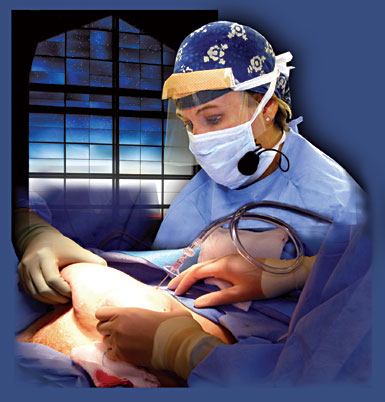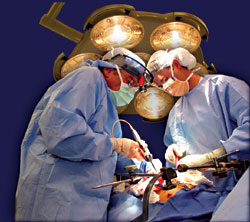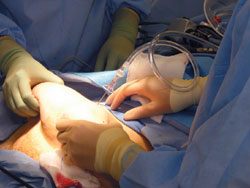Anesthesiologist & Artist
The photographs of Alfred Feingold, M.D.

|
|
GUESS WHO: With everyone wearing masks, it's often hard to tell who's who in the OR. Here, vascular surgeon Robert Zwolak, M.D., and vascular surgery fellow Brian Nolan, M.D., are doing a carotid endarterectomy. But which is which? |
|
You could put this picture up and have a game to see who can identify the surgeons. The operating room is very used to games like that. Someone knows exactly who they are, though—one's wearing an identifiable headband. Nurses can often recognize doctors just by a piece of their ear. |
|

|
|
HEROIC WORK: This stained glass window—which was created by Vermont artist Sabra Field for the DHMC chapel—seems to have found its way into the operating room where ob-gyn Misty Blanchette Porter, M.D., is beginning a laparoscopic hysterectomy. And Porter, a 1989 DMS graduate, appears to be wearing a veil, but it's actually a splatter shield to protect her eyes. |
|
This is an example of using icons—things people can relate to. They may not be able to relate to this abdomen being pulled up as gas is injected into it so the patient can undergo laparoscopic surgery. But they can relate to the fact that there's a window there, that this is important work, that this is heroic work—spiritual work in addition to mechanical work. You can see that a hand is coming out of the chapel window, reinforcing a spiritual connection. After the abdomen is inflated, the surgeons insert their instruments into the space created by the air, then they look around and do their surgery. |
|




